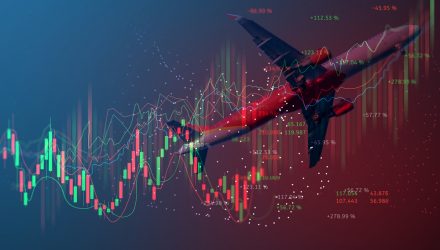The S-Network Global Travel Index (TRAVEL) is largely consumer-driven to the extent that performance is more aligned with consumer-based indexes rather than other traveling-related indexes. We’ve discussed in previous notes how top constituents include luxury goods retailers (LVMH Moet Hennessy Louis Vuitton SE [MC FP, 4.7% index weight] and Estee Lauder Companies [EL, 3.9% index weight]), credit card companies (American Express [AXP, 4.5% index weight]), and other consumer discretionary companies (Walt Disney Co [DIS, 4.4% index weight]). But recently, as consumer strength has started to become more uncertain, business travel has also emerged as a green shoot, as employees get burnt out from virtual meetings and also look to blend both business and leisure. This note discusses three factors supporting the recovery in business travel.


Virtual meetings, especially for large conferences and events involving, likely won’t replace in-person meetings but instead, act as a supplement.
Over the past couple of years, leisure travel has driven both airline and hotel demand, while business travel remained suppressed. Many analysts and investors believed that business travel would not return to pre-pandemic levels because of the popularity of video conferencing (e.g., Zoom or Microsoft Teams). But recently, we’ve seen that this may not be the case. After what was almost two years of video meetings, employees realized that meeting online cannot completely replace all aspects of in-person meetings. While video meetings are still highly used for day-to-day work and connecting teams in different geographies (Zoom reports that enterprise customers grew 18% y/y in its most recent F2Q23 earnings report), they cannot truly replace large-scale conferences and events. However, video meetings may still be able to supplement some large-scale events as technology allows for more “metaverse”-type features like avatars and augmented reality.
The blending of business and leisure travel may lead to additional nights booked for hotels and other lodging companies.
Both Marriott (MAR, 4.6% index weight) and Hilton (HLT, 4.6% index weight) have reported a significant recovery in business travel, which includes both group travel (for conferences and large meetings) and business transient travel (day-to-day business travel). Pre-pandemic, Marriott’s demand was driven by around 60% business and 40% leisure travel. Those percentages flipped during the pandemic and now have returned to approximately 53% business and 47% leisure as of 2Q22 (3Q22 earnings will be reported on November 3 after market close). For Hilton, business transient RevPAR (revenue per available room) has reached 2019 levels, with the large corporate business having the greatest acceleration. The increase in remote work has led to the growth of blended business and leisure travel, where an employee may fly around for a few days for business and then add on a few more days for a vacation. While some believe that this may hurt leisure activity, this could actually help boost profits as business travel is typically booked in shorter windows at higher rates, and customers are less price sensitive when it comes to business versus leisure. Customers who add on a couple of days of hotel stays may add on these dates at a later date compared to when they usually would when booking their own vacation.
Remote work is still very popular over travel, so the trend of “nomadic workers” who work in Airbnbs while exploring different cities could continue.
Much like the blending of business and leisure, the continued popularity of remote work post-pandemic has allowed some employees to work from almost any location. Many employees, especially younger workers, may book extended stays in different cities and spend days working and nights exploring. Airbnb (ABNB, 4.5% index weight) reported in its most recent 3Q22 earnings report that long-term stays (28 days or more) are currently 20% of gross nights booked in the quarter. Out of the total gross nights booked, 45% were from stays of at least seven nights.
Bottom Line:
Most of the comeback story behind this sector has been driven by consumers and their eagerness to head out and go on vacation. And while consumer strength continues to be a large factor, business flights have also started to re-emerge over recent quarters as employees get burnt out from virtual meetings and also look to blend both business and leisure.
The S-Network Global Travel Index (TRAVEL) is the underlying index for the ALPS Global Travel Beneficiaries ETF (JRNY).
Related Research:
Consumers Driving Despite Higher Costs
Netflix Proves Streaming Companies are Still Worth Watching
Thematic Times: Travel Heats Up This Summer
Strong Airline Demand Gives Wings to the Travel Industry








